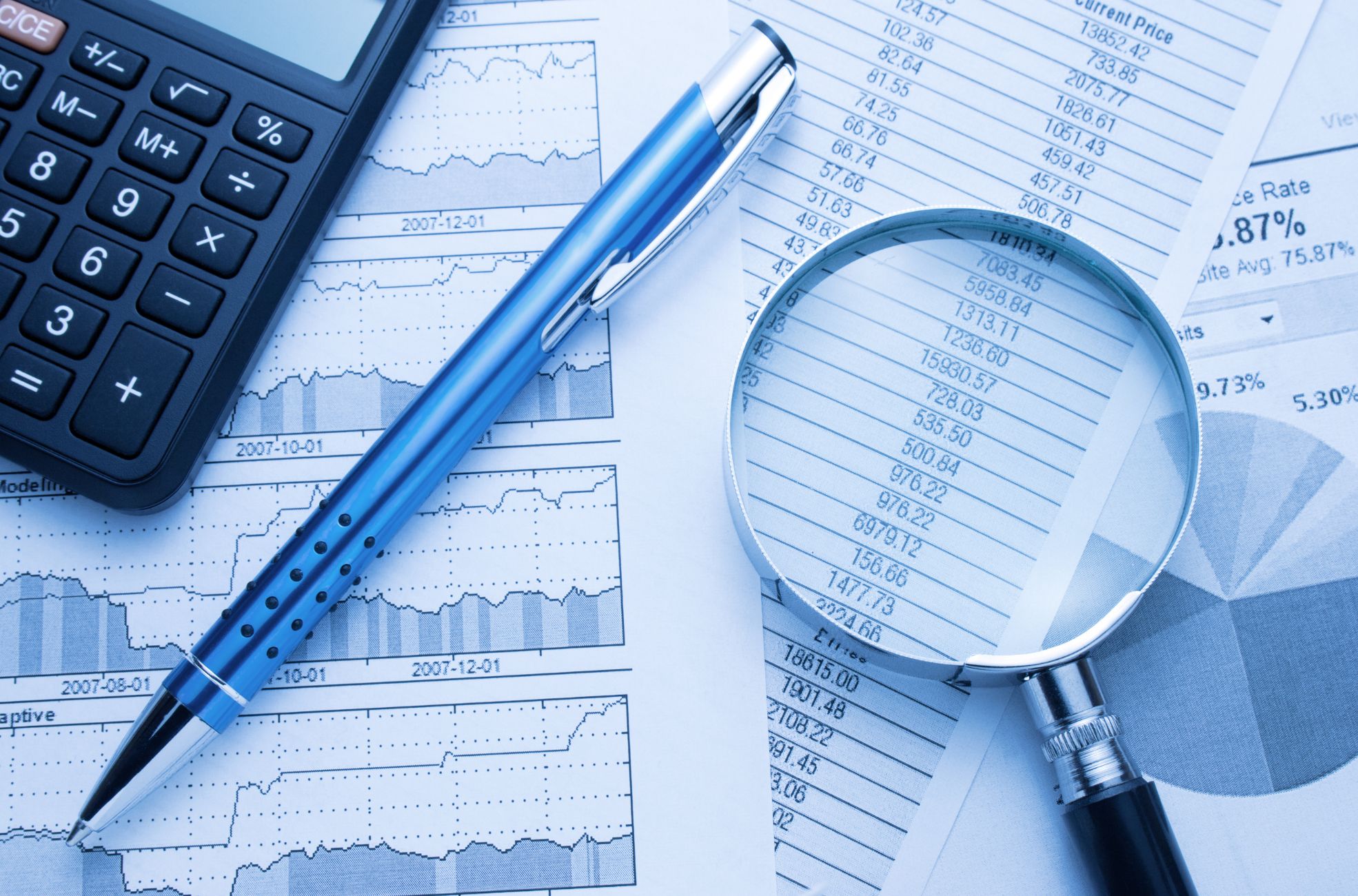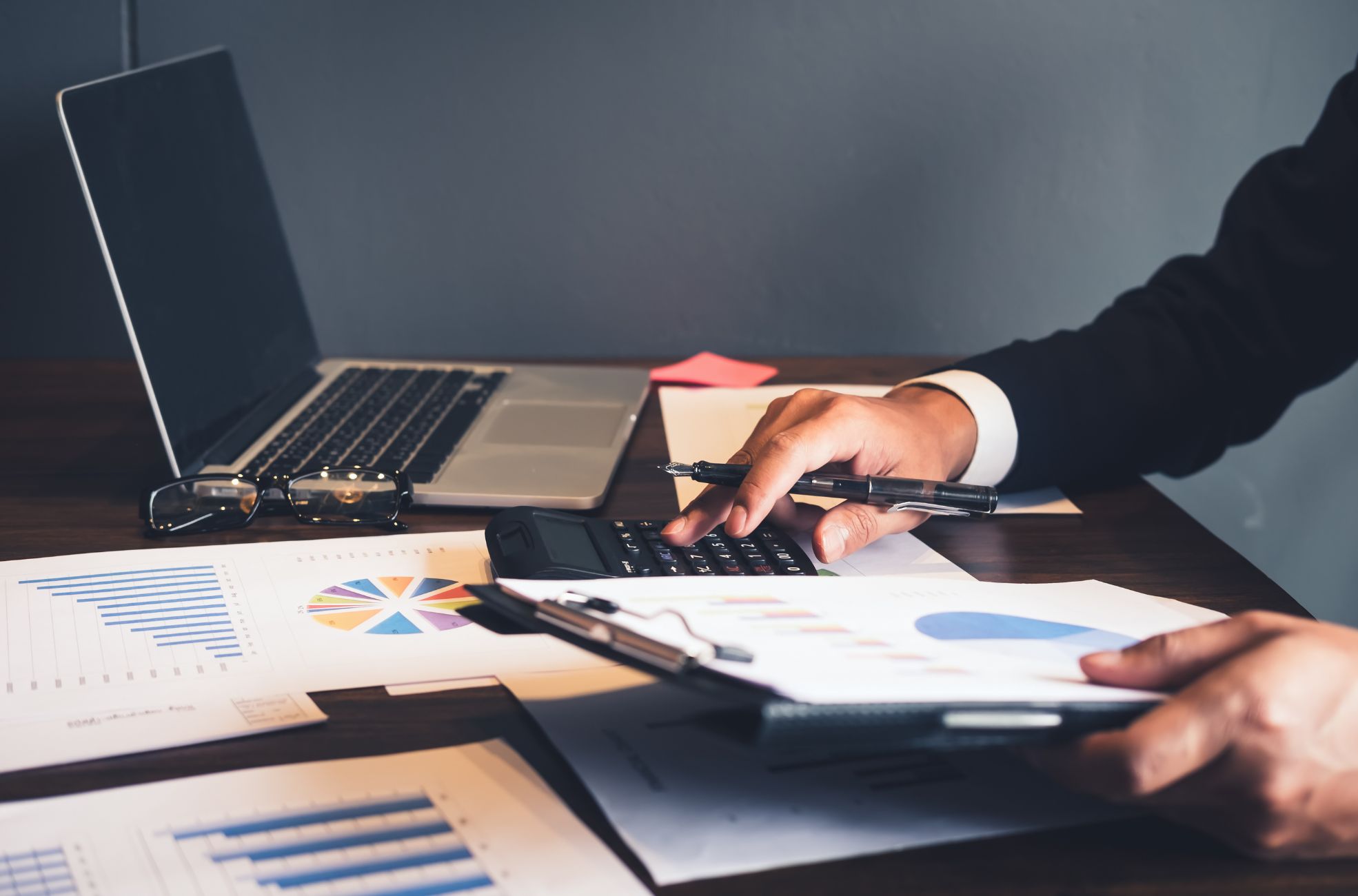Are you looking to boost your business’s profitability and operational efficiency? This comprehensive guide to cost accounting is what you’re after, as we will fully explain cost accounting.
Properly implementing cost accounting can help you make informed decisions, optimise resource allocation, and spot opportunities for cost reduction. This article will provide you with a complete understanding of the basics of cost accounting, various types of cost accounting, essential principles, and much more.
You’ll also uncover different cost accounting methods, practical implementation strategies, and future trends. By mastering cost accounting, you can transform your business operations, maximise profitability, and sustainably secure your company’s future.
Understanding the Basics of Cost Accounting
Defining Cost Accounting
Cost accounting is a specialised branch of accounting that’s all about capturing a company’s total costs. It does this by assessing the variable costs of each step of the production process and fixed costs. The main goal of cost accounting is to gather and determine costs, which are then accumulated for each cost object.
This information gives you a detailed analysis of your company’s total production costs for its products or services, helping you make fully informed business decisions.
Significance of Cost Accounting in Business
Cost accounting is a game-changer in business operations. It helps protect margins by organising and tracking all direct and indirect expenses, providing insights to better your budgeting, increase efficiency, and increase profit. It informs your budgeting decisions, product/service pricing, and business strategy.
When you implement cost accounting practices, you can identify areas of inefficiency and waste, allowing you to make strategic changes to maximise profitability.
Furthermore, cost accounting helps dictate how much the production of a good or service will cost, which is key for pricing decisions. It also aids in planning, enacting, distributing, controlling, and inspecting various activities by providing crucial data. This data benefits you and your team and delivers information to outsiders, thus making cost accounting a valuable tool for businesses looking to maximise profitability and efficiency.
Various Types of Costs
In cost accounting, costs are categorised into different types, such as:
- Direct materials and costs
- Indirect costs
- Fixed costs
- Variable costs
- Operating costs
Direct costs, like raw materials, can be directly attributed to how goods or services are produced. Indirect costs, on the other hand, can’t be directly attributed to specific goods or services and are treated as overhead expenses.
Fixed costs don’t change with the level of production, while variable costs change in direct proportion to the level of production. Operating costs are the costs associated with the day-to-day operations of a business. Including these fixed and variable costs in your cost accounting calculations can help you better control your expenses and improve operational efficiency.
Difference Between Cost accounting and Financial accounting
While cost accounting and financial accounting both deal with a company’s finances, they serve different purposes and are used by different audiences. Management uses Cost accounting internally to make educated choices about pricing, production, and resource allocation. It’s focused on reducing and controlling costs and is primarily for internal management.
On the other hand, financial accounting is used to keep complete records of financial information for reporting purposes. It’s focused on issuing reports to outside parties and is mandatory for all businesses. Financial accounting allows for comparisons between different organisations and financial periods, but future forecasting can’t be done through this information.
In essence, cost accounting is focused inwardly on management choices, while financial accounting is focused on providing information to external parties. Both are crucial for your business’s own cost accounting vs. financial activities and go hand in hand, with cost accounting data being helpful for financial accounting.

Key Principles of Cost Accounting
Cost accounting is a vital tool that gives your company’s management the information they need to run the business effectively. It’s all about the principles of costing, attributing costs to the activity that generates them, and focusing on cost reduction. The key principles of cost accounting include cost, cost unit and cost centre, cost classification, and cost accounting standards.
Element of Cost
Cost elements in cost accounting are crucial to seeing how costs are incurred within your business. These elements include:
- Direct material cost
- Direct wages
- Direct expenses
- Indirect materials
- Indirect labour
- Indirect expenses
- Overheads
By breaking down costs into individual items and arranging them in categories, you can see which costs aren’t delivering benefits and where savings can be made.
Cost Unit and Cost Centre
A cost unit refers to the unit of product, material, and labour costs, service or time (or a combination of these) in relation to which costs can be ascertained or expressed. Conversely, a cost centre is a location, person, or item of equipment (or group of these) for which costs can be ascertained and used for cost control. Understanding your cost unit and cost centre is crucial in cost accounting as it aids in allocating costs and resources where they’ll have the most significant effect.
Cost Classification
Cost classification involves grouping costs according to their common characteristics. Knowing these classifications can help you identify inefficiencies, eliminate waste, and make informed decisions to improve profitability.
Cost Accounting Standards
Cost Accounting Standards (CAS) are guidelines established by the US government to ensure consistency and accuracy in cost accounting practices. They provide a framework for determining the actual cost of goods or services and help organisations manage their finances effectively. Compliance with CAS is mandatory for any company that contracts with the government to provide goods or services. Implementing CAS can help you identify areas where you can streamline operations and improve efficiency, reducing waste and increasing productivity. However, challenges in implementing CAS may include:
- Collecting and analysing accurate data.
- Determining appropriate cost allocation methods.
- Implementing new software or integrating existing systems.
- Managing resistance to change.
Exploring Different Methods in Cost Accounting
In the realm of cost accounting methods, many methods are available to enhance profitability and efficiency.
Job Order Costing System
The job order costing system is a technique that allocates each expense to a specific job, divided into three categories: labour, materials, and other overhead costs. This method is prevalent in sectors like construction, where actual costs are contrasted against the projected budget. It’s a comprehensive technique suitable for businesses that provide bespoke or unique products or services. However, it can be more intricate and time-consuming than other methods, particularly for companies that manufacture a large volume of similar goods.
Process Costing System
Conversely, the process costing system is employed when a substantial number of identical units are being produced. It’s most effective to accumulate costs at a collective level for a large batch of products and then allocate them to the individual units produced. This managerial accounting system is frequently used in large-scale manufacturing, such as petroleum refineries, food production, and chemical processing.
Process costing allows companies to enhance their operations and decrease costs by emphasising the cost of each stage in the manufacturing process. This enables companies to identify redundant, outdated, or inefficient processes and implement necessary improvements. It’s a simpler and more practical method of lean accounting for companies that mass-produce similar goods, allowing them to accurately estimate the cost of producing each unit and set suitable prices for their products.
Standard Costing and Variance
Standard costing is a method implemented to estimate the total cost of manufacturing products or providing services. It involves setting standard costs for each component of the product or service and then tracking actual costs against these standards.
Variance analysis is a different method used to compare actual costs to standard costs. It assists managers in identifying areas where costs are higher than expected and taking corrective action if necessary to control costs. Variance analysis can also assess the impact of price changes, volumes, or other factors on overall cost levels.
Standard cost variances occur when actual costs differ from expected input costs used in a standard costing system. Various factors, such as changes in material prices, labour rates, or productivity, can cause these variances. Investigating the causes of standard cost variances can improve efficiency and profitability.
Activity-Based Costing (ABC) and Marginal Costing
Actiivity-Based Costing (ABC) is a method that identifies activities in an organisation and dictates the cost of each activity to all products and services following their contribution margin to the total consumption by each. This model allows more indirect costs into direct costs compared to conventional costing models.
Conversely, marginal cost is the accounting system where variable costs are charged to cost units and set costs of the period are removed against the aggregate contribution. It’s a management accounting technique that presents cost data on the basis of variable and fixed costs for managerial decision-making.
Each of these methods has its strengths and weaknesses, and the choice between them will depend on your company’s specific circumstances. By familiarising yourself with these methods and how to apply them, you’ll be well-equipped to make informed decisions to maximise profitability and efficiency in your business.
Practical Implementation of Cost Accounting
Cost accounting is more than a mere tool; it’s a strategic asset for your business. It provides a comprehensive breakdown of costs associated with the production of goods or services, enabling you to identify areas for improved cost management and maintain profitability.
Role of Cost Accounting in Pricing Decisions
Beyond crunching numbers, cost accounting plays a pivotal role in intelligent pricing decisions. It amalgamates both financial and non-financial data to generate precise inventory costs. This data can be leveraged to establish competitive and profitable product prices. It also reveals the break-even selling price of products and illustrates how product costs fluctuate with volume variations. This information is invaluable when formulating a pricing strategy and adapting to shifts in sales volume.
Cost Control and Reduction Techniques
Cost accounting plays a significant role in cost control and reduction strategies. You can implement strategies to reduce costs and enhance profitability by scrutinising costs and identifying inefficiencies. This could involve pinpointing and using costs, eliminating wasteful processes, negotiating improved prices with suppliers, and optimising resource allocation.
Moreover, cost accounting can protect your margins by systematically organising and tracking all direct and indirect expenses. It offers insights that can facilitate improved budgeting, heightened efficiency, and increased profit. It also supports these objectives by examining actual expenses, projecting future costs, and allocating costs to product lines.
Budgeting and Forecasting in Cost Accounting
Budgeting and forecasting are integral components of cost accounting. By formulating budgets and forecasts, you can plan and allocate resources effectively, identify potential cost savings, and make informed decisions to enhance profitability. Cost accounting supplies the data and analysis required to create accurate budgets and forecasts.
Budgeting outlines the financial trajectory for your company, while financial forecasting assesses whether you’re on the right path, estimating future revenue and income. These two elements should work in harmony, with the budget delineating the desired direction for your company and the financial forecast indicating whether you’re meeting your budget objectives and the future direction of the financial position for your company.
Cost Audit and Cost Accounting Report
Regular cost audits and cost accounting reports are essential for optimising profitability and efficiency. Regular cost audits enable you to identify areas of cost overruns, inefficiencies, and potential areas for improvement. Cost accounting reports offer detailed information on costs, empowering you to analyse and make informed decisions to optimise profitability and efficiency.

Challenges and Trends in Cost Accounting
While cost accounting is a crucial tool for businesses, it comes with its own challenges, particularly in the ever-evolving global business landscape.
Addressing Common Cost Accounting Challenges
The complexity and diversity of the business environment, including globalisation, outsourcing, mergers and acquisitions, and product differentiation, can create unique cost structures and drivers. To navigate this, cost accounting systems must be adaptable and capable of capturing and allocating costs accurately.
Timely and relevant information for decision-making is another hurdle. The dynamic nature of the business environment necessitates quick responses to changing customer needs, competitive pressures, and market opportunities. Therefore, cost accounting systems must be integrated, automated, and capable of providing reliable and updated information.
Supporting innovation and sustainability is another challenge. Cost accounting systems must measure and encourage the costs and benefits of initiatives such as research and development, new product development, quality improvement, environmental protection, and social responsibility.
Lastly, aligning and communicating cost information with the strategic goals and objectives of the business is a significant challenge. Cost accounting systems must link the costs and profitability of various activities and processes with the value creation and delivery for the customers and stakeholders.
Role of Technology in Cost Accounting
Technology is instrumental in addressing these challenges. Cloud-based accounting software allows for real-time financial reporting and access to financial information from anywhere. Big data and analytics can help identify trends and patterns, make accurate predictions, and detect fraud. Blockchain technology can securely record financial transactions and reduce transaction costs.
However, despite advancements in cost management technology, many corporations still need to start using efficient systems and processes. A significant reason for their failure to implement modern technology and tools is the concern about the potential disruption it may cause to their overall operations. To overcome this, businesses must re-evaluate their need for an integrated cost control system and eliminate silos.
Emerging Trends in Cost Accounting
Emerging trends in cost accounting include implementing new digital technologies, like AI (artificial intelligence) and machine learning, to optimise cost structures and transform how businesses operate. Predictive analytics can help optimise costs and improve productivity by better understanding cost drivers and forecasting.
The Future of Cost Accounting and Its Impact on Business Strategy
The future of cost accounting will likely see robotic process automation and machine learning integration to obtain more significant and relevant cost information and make better-informed decisions. Implementing digital technologies in a cost accounting system can increase the speed and customisation of the costing process, improve the quality of cost information, ensure transparency, and provide real-time access to information.
However, the most critical aspect of digital transformation in cost accounting is the acceptance of implementing digital technologies within existing IT solutions. The activity’s perceived increased effectiveness and efficiency is a significant driver for this acceptance. As such, the future of cost accounting will not only be shaped by technological advancements but also by the willingness and ability of businesses to adapt and embrace these changes.
Harnessing the Power of Cost Accounting
The complex world of cost accounting might seem intimidating at first. But don’t worry, it’s not just about monitoring costs—it’s about closely examining your expenditures and using this knowledge to make intelligent business decisions.
Whether embracing trends like Artificial Intelligence and machine learning or sticking to standard cost accounting practices, you can drive unprecedented growth for your business. The secret is adaptability to changing business landscapes and the ability to make changes when needed.
Don’t see cost accounting as an enemy but as a friend on your journey towards increased profitability and efficiency. By turning cost accounting into a strategic asset, it can guide your way to business success.









